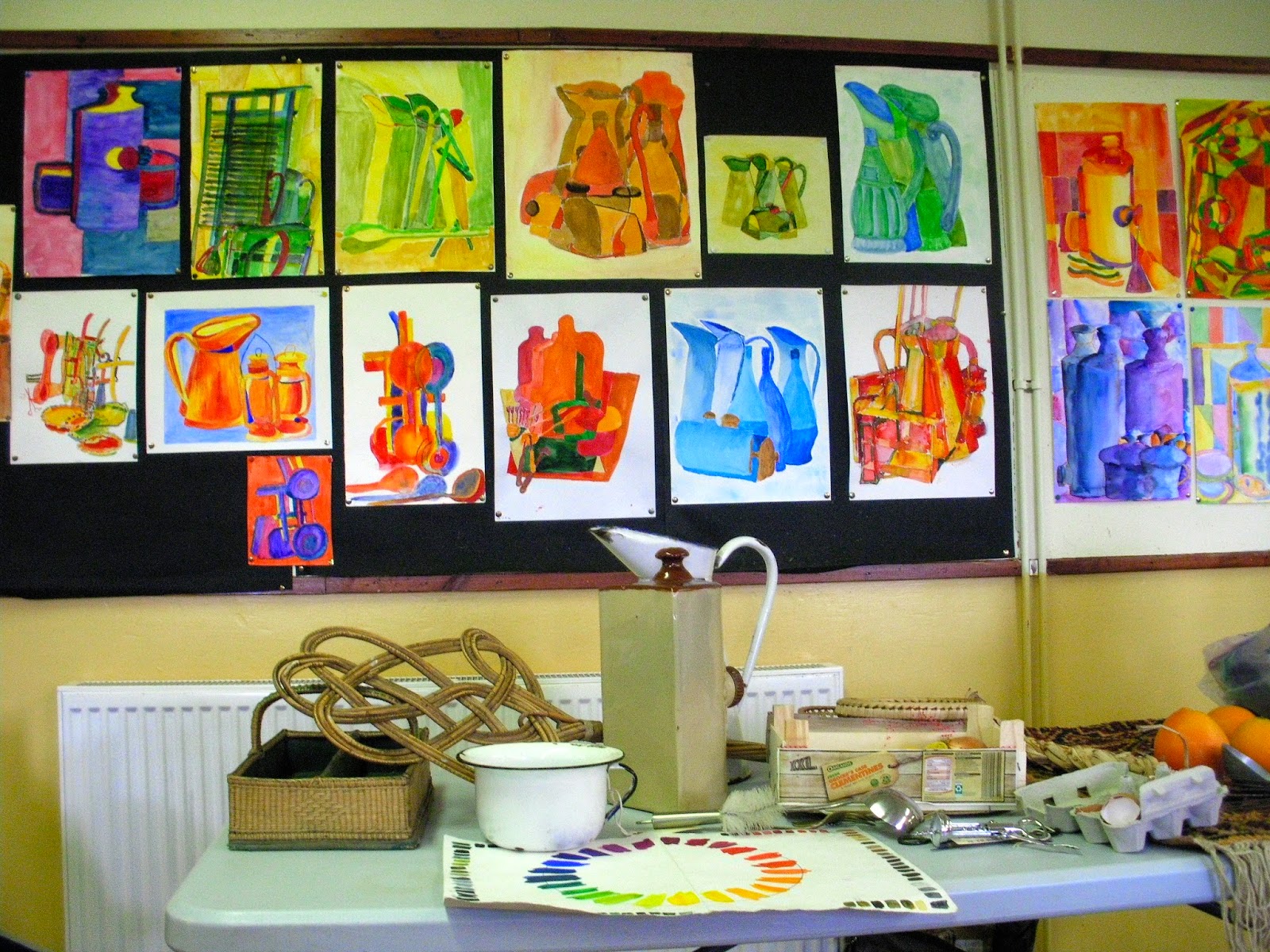here you can see the Walnut Cracker, that's the strange wooden item, plus a lemon and pheasant feather (not from the collection!) on a sack which is from the collection, in fact you can see where it has been darned, and mending sacks was one of the bad weather tasks on the farm which the men would have to do.
so above are some rather lovely straightforward OBJECTIVE DRAWINGS, which were our starting point. Then we went on to creating multiple image drawings, the idea here was to break up the standard image and then colour the segments, cultivating an awareness of different colours and the harmonising and complementary nature of groups of colours, so here you can see work in progress...
and then some paintings 'en masse', where you can see the origin of the images, but also see how the basic image becomes dispersed and starts to become something else, an altogether different image, where shapes and colours start to vie in importance with the idea of what the original objects were.
and as ideas progressed the colour choices have become more sophisticated, utilising, as you can see harmonising colour, and complementary colour. The artists used variously oil, acrylic, and water-colour paint.
and here you can see some other pieces of everyday subject matter in addition to the historic items from Gressenhall.

























No comments:
Post a Comment